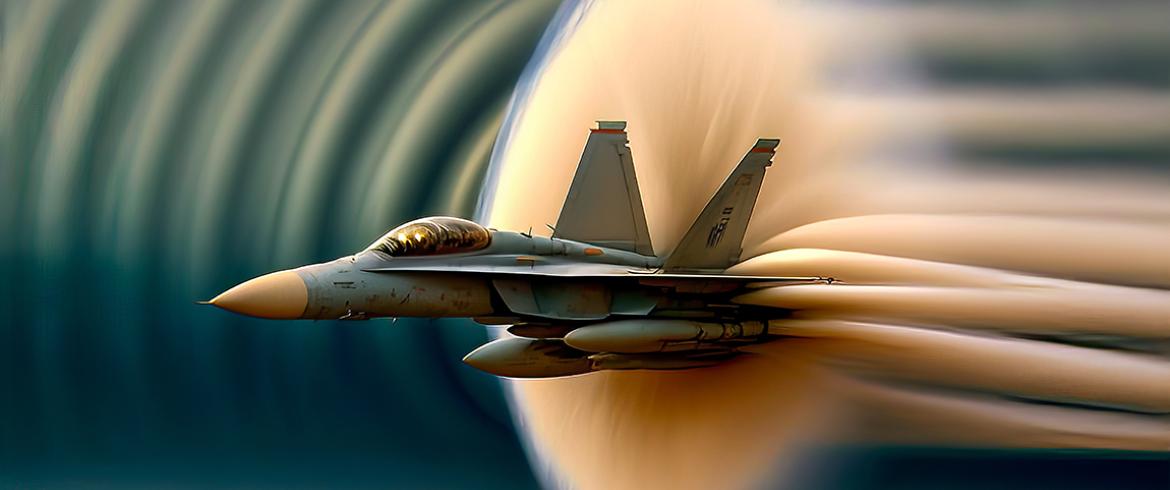
A supersonic fighter plane captured breaking the sound barrier, a symbolic visual to represent the powerful performance of air. Generative AI By XaMaps for Adobe Stock

Rajan Kumar, a mechanical engineering faculty researcher at the FAMU-FSU College of Engineering and director of the Florida Center for Advanced Aero-Propulsion (FCAAP), is leading a new study that explores the forces that affect aircraft at supersonic and hypersonic speed.
Kumar’s team is working with the Air Force Research Laboratory (AFRL) to develop next-generation military aircraft. The research will keep our nation safe and may be helpful in the future of civilian supersonic flight.
“When two aircraft flying at supersonic speeds are near each other, the shock waves and other flow features generated by one vehicle affect the performance and trajectory of the other vehicle,” Kumar said. “In some cases, the two vehicles may even collide with each other. We plan to study these phenomena to help enable safe flight operations.”
Kumar’s group specializes in multibody interaction problems and investigates store release issues involving high-speed flow regimes. These “stores” could be anything from a weapon to a humanitarian aid package that separates from the plane during flight.
WHY IT MATTERS:
“If you want to deliver a rescue or support package in an area not easily accessible, such as a warzone, you may have to do so at fast speed, so you don’t get shot down,” Kumar said. “Manned or unmanned, whatever you are dropping should not hit the parent aircraft during flight.”
WHO’S INVOLVED:
FCAAP upgraded its research facilities over the last year and now has enhanced flow diagnostics for projects benefitting the U.S. Air Force and other entities. Graduate students maintain all the facilities, and students get to work on real problems related to aero-propulsion.
“Students involved in this project will be involved in cutting-edge research and will have an opportunity to interact with AFRL engineers and scientists,” Kumar explained.
WHERE’S THE MONEY COMING FROM:
The U.S. Air Force Research Laboratory is funding the $750,000 study through Florida State University for three years.
“We are grateful to AFRL for sponsoring and collaborating on this project,” Kumar said.
RELATED ARTICLES
$1.5M to Expand Hypersonic Research Capability and Train Future Aerospace Engineers Secured via FAMU
U.S. Air Force Invests $5M Grant for New University-Led Center Of Excellence
FAMU-FSU Engineering professors net $600K for fluid dynamics research
